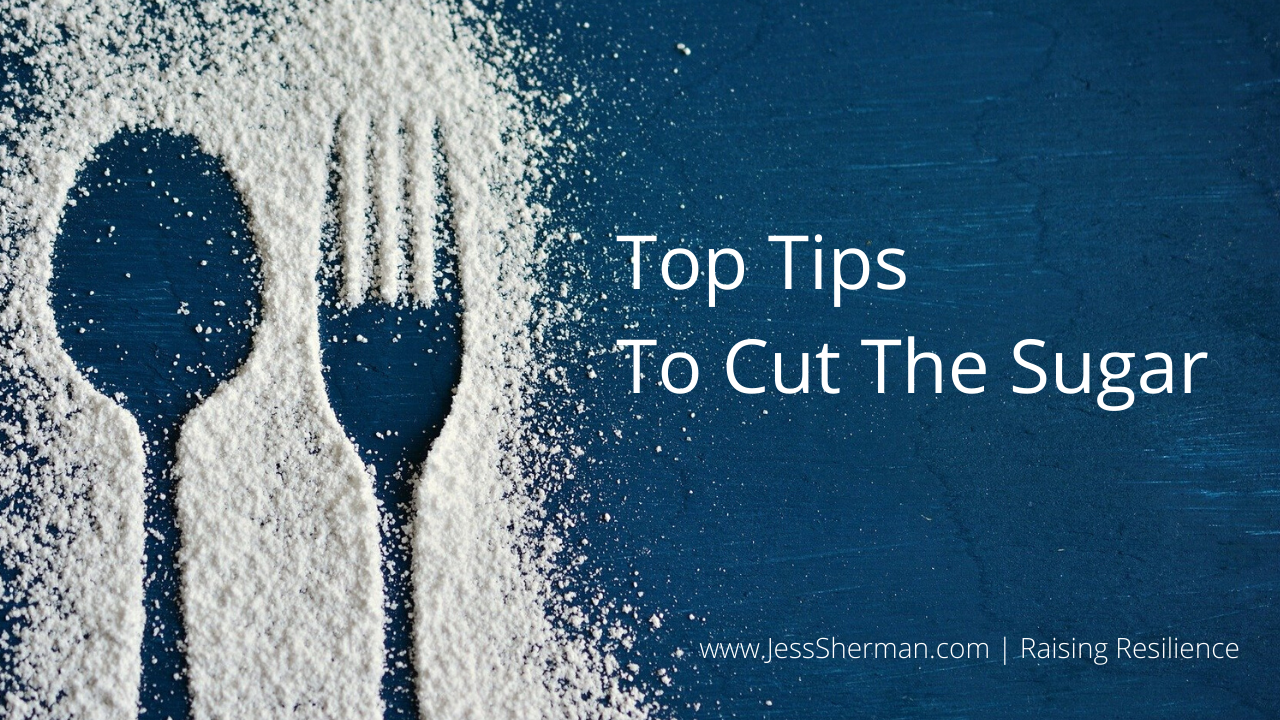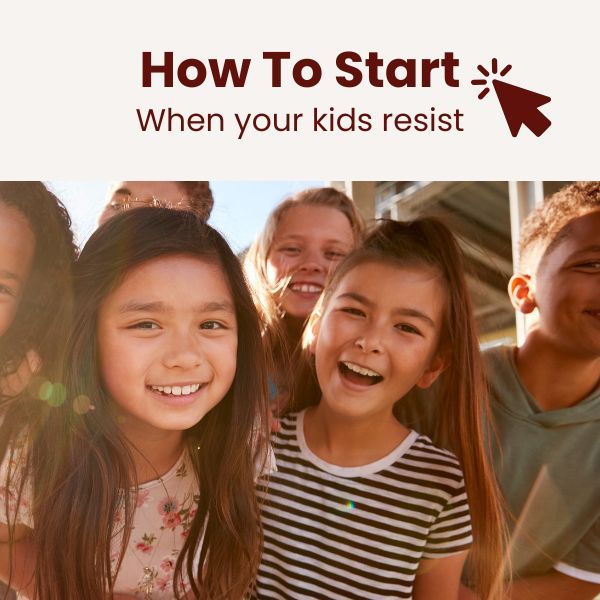Top Tips To Cut Sugar Cravings

Busting through sugar cravings is a big issue for families!
Sometimes a sugar craving looks like tantrums when candy is withheld, sometimes it looks like clandestine visits to the sugar bowl or maple syrup jug, sometimes it looks like a picky eater who will only eat carbohydrates like bread and pasta.
We know sugar causes all kinds of health problems and that we eat too much of it. But what should parents do when it comes to sugar and their kids??
Why Bother?
We know at this point that sugar causes all kinds of health problems ranging from diabetes to heart disease, we know that sugar has an adverse impact on the gut microbiome which is a key player in our mental wellness, and we know that we generally eat too much sugar and that most of us do better on a diet that is lower in sugar.
This post is not going to explain why sugar is so bad. I'll write about that elsewhere. This post is for those of you who want to cut back on the sugar your kids are eating, but are have trouble breaking the addiction and kicking it to the curb.
Let's Talk Strategy.
My goal is to help parents actually do the things they want to do to improve the health and wellbeing of their families. So let's move past the why and into the how.
The first thing to understand is that breaking a sugar addiction has little to nothing to do with willpower (yes, sugar is super addictive... so let's call a spade a spade).
When it comes to breaking a sugar addiction, it helps to think about what is driving the addiction in the first place.
Addictions don't come out of thin air... addictions move in to fill a gap.
So what's the gap sugar is filling for your child?
Cutting Sugar is Not Gonna Come From Willpower
Sugar is highly addictive. There are reasons we crave it. Here are some common drivers of sugar cravings. Root out this stuff and you'll be more successful at kicking the sugar out.
- Low blood sugar. The level of glucose in the blood needs to stay within a very narrow margin. Should that level drop, hormones trigger the brain to want sugar. Not eating enough during the day, certain micronutrient deficiencies, overeating refined carbohydrates and poor fiber intake can lead to low blood sugar. Children can be very susceptible to this.
- Yeast overgrowth in the gut. A plethora of yeast species naturally live in our digestive tracts and are helpful to our detoxification and immune fucntion (among other things). When certain yeast species are allowed to overgrow, though, they can create chemical metabolites that can cause pain, inflammation and mood changes. Yeast eat sugar - when they're hungry they will make you reach for sugar.
- Cravings for comfort & Stress. Sugar truly makes us feel good... for a while. Sugar’s ability to stimulate feel good-hormones like endorphins, dopamine and serotonin is in part what makes it so addictive. Also, since stress gobbles up energy, and since your body knows that the quickest way to replenish that energy is to reach for sugar, stress can lead to sugar cravings.
Can you see why this has little to do with willpower? There is something causing the craving and the question to ponder is: why is my child craving sugar?
If you can’t alter biochemistry by reducing stress, stabilizing blood sugar and controlling yeast, you’ll find it very difficult to get sugar out of your diet, or your child’s.
So what is at the root for your child?
Start By Looking For Patterns.
- Does the craving appear mid afternoon? That's when serotonin naturally takes a dip so maybe the body is trying to boost that.
- Does it happen towards the end of the day? Could be the body is looking for quick energy.
- Does it happen first thing in the morning? Perhaps the body is trying to boost dopamine, our 'get-up-and-go' hormone.
- Is it happening in response to stress? Perhaps the body is trying to boost endorphins which are hormones that improve self-esteem and confidence.
Some Nutritional Strategies To Help Curb Sugar Cravings:
1. Stimulate the same feel-good hormones as sugar, using nutritious foods instead.
- Include plenty of tyrosine-rich foods like chicken, fish, nuts, pumpkin seeds, beans, eggs, along with plenty of tryptophan-rich foods like turkey, shrimp, mushrooms, cod, tuna, spinach. Tyrosine and Tryptophan are the amino acids that we need to create dopamine and serotonin.
- Increase foods rich in vitamins A and D. They work together in the creation of dopamine.
- Assess the need for more magnesium and vitamin B6 which are used in the conversion of tryptophan to serotonin and tyrosine to dopamine (both those co-factors are, as it turns out, depleted by sugar!)
- Engage in repetitive movements like chewing gum, drumming, knitting.... these activities increase serotonin
- Try meditation and exercise to increase dopamine and endorphins
- Try dried fruit and pure dark chocolate to wean yourself off of the need for refined sugar. The taste of 'sweet' on the tongue will stimulate opiates in the brain which will lead to dopamine release. Go for quality over quantity with this strategy.
2. Eat for better blood sugar stability
- Consume 5-10 g protein and 5-10g of fiber with breakfast
- Sit and relax when you eat (try to not “eat on the go”)
- Focus on lower-sugar fruit like berries, apples and pears
- Eat chromium-rich food like broccoli, green beans, apples and grass-fed beef
3. Try amino acids
- These nutrients can curb sugar cravings because they are the building blocks for those hormones we talked about above. They can be taken as supplements. Some helpful amino acids can be:
- L-glutamine. Use 200-500mg of powder directly on the tongue when a sugar craving hits
- Tryptophan. If low serotonin is causing the sugar craving this can be helpful morning and then, if needed, mid-day
- D-phenylalanine. If the sugar is filling an emotional need this can be helpful first thing in the morning
The RDA for added sugar is currently 9 tsp for men (36g) and 6 tsp for women (24g). Half that for children. Start to pay attention to food labels to see how much you're taking in in a day. You'll likely be shocked!
It's time to kick it to the curb!






